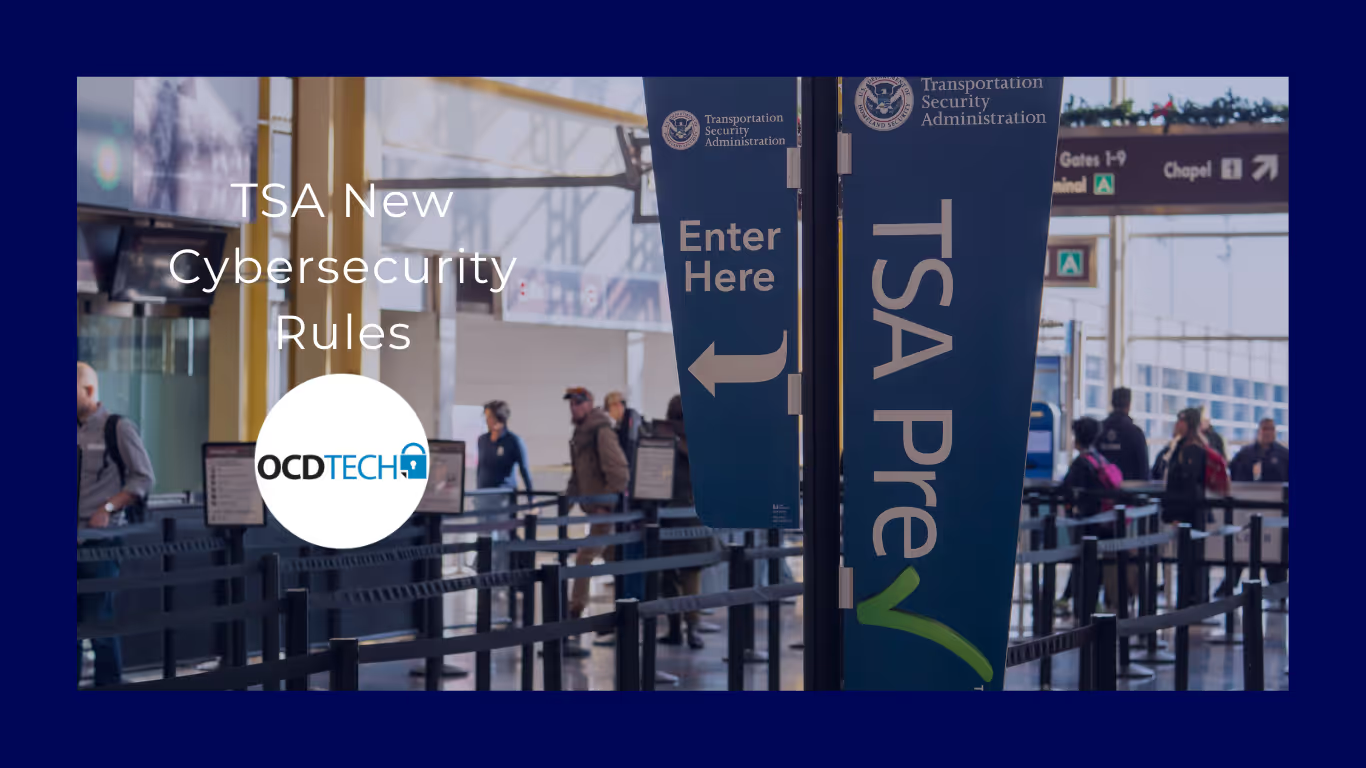By
OCD Tech
March 14, 2023
•
6
min read

OCD Tech believes stay informed is the best way to stay protected, read this interesting article from The Washington Post and the TSA to know the latest announced cybersecurity rules.
The US Transportation Security Administration (TSA) has announced new cybersecurity rules for airport and aircraft operators, which prioritizes the development of network segmentation policies and controls.
It marks the latest set of cyber rules for the aviation sector imposed by TSA. The newer set of rules requires the pertinent airports and operators to develop security plans for defending things like who has access to networks, then seek TSA approval for them.
TSA Administrator David Pekoske said in a news release that “Protecting our nation’s transportation system is our highest priority,” and TSA will work closely with industry to boost cybersecurity.
The latest mandates arrive after Friday’s Environmental Protection Agency rules for the water sector, and less than a week after the Biden administration released a national cybersecurity strategy that reflects the administration’s shift toward embracing regulation to secure critical infrastructure.
While the aviation rules already had been in the works, they follow a series of incidents in the sector in recent months that affected, airport websites, navigation and flight tools, passenger data and the TSA “no-fly” list.
The rules
TSA previously directed affected airports and airline operators to designate a cybersecurity coordinator, report cybersecurity incidents to the Cybersecurity and Infrastructure Security Agency within 24 hours, develop a plan for responding to cyber incidents and conduct a vulnerability assessment.
The TSA new cybersecurity rules announced March 7 2023, require individual airports and airline operators to develop an implementation plan featuring a number of security precautions, like patching and continuous monitoring for threats.
TSA has diluted some initial industry objections to cyber rules for other sectors it regulates by making them “performance-based,” meaning that the agency is less focused on how entities meet the goals than the final outcome.
The administration has said it extended existing TSA authorities to cover the writing of its cyber rules. In all, according to an administration breakdown, the existing powers could cover 80 airports, 21 passenger airlines and four cargo lines.
The move is part of TSA’s efforts, which requires critical transportation sector operators to combat cybersecurity risks.
It comes in the wake of continuous cybersecurity threats hitting the country’s critical infrastructure, including the aviation industry.
Source: TSA, Washington Post

Audit. Security. Assurance.
IT Audit | Cybersecurity | IT Assurance | IT Security Consultants – OCD Tech is a technology consulting firm serving the IT security and consulting needs of businesses in Boston (MA), Braintree (MA) and across New England. We primarily serve Fortune 500 companies including auto dealers, financial institutions, higher education, government contractors, and not-for-profit organizations with SOC 2 reporting, CMMC readiness, IT Security Audits, Penetration Testing and Vulnerability Assessments. We also provide dark web monitoring, DFARS compliance, and IT general controls review.
Contact Info
.svg)
OCD Tech
.svg)
25 BHOP, Suite 407, Braintree MA, 02184
.svg)
844-623-8324
.svg)
https://ocd-tech.com
Follow Us
Videos
Check Out the Latest Videos From OCD Tech!
Services
SOC Reporting Services
– SOC 2 ® Readiness Assessment
– SOC 2 ®
– SOC 3 ®
– SOC for Cybersecurity ®
IT Advisory Services
– IT Vulnerability Assessment
– Penetration Testing
– Privileged Access Management
– Social Engineering
– WISP
– General IT Controls Review
IT Government Compliance Services
– CMMC
– DFARS Compliance
– FTC Safeguards vCISO